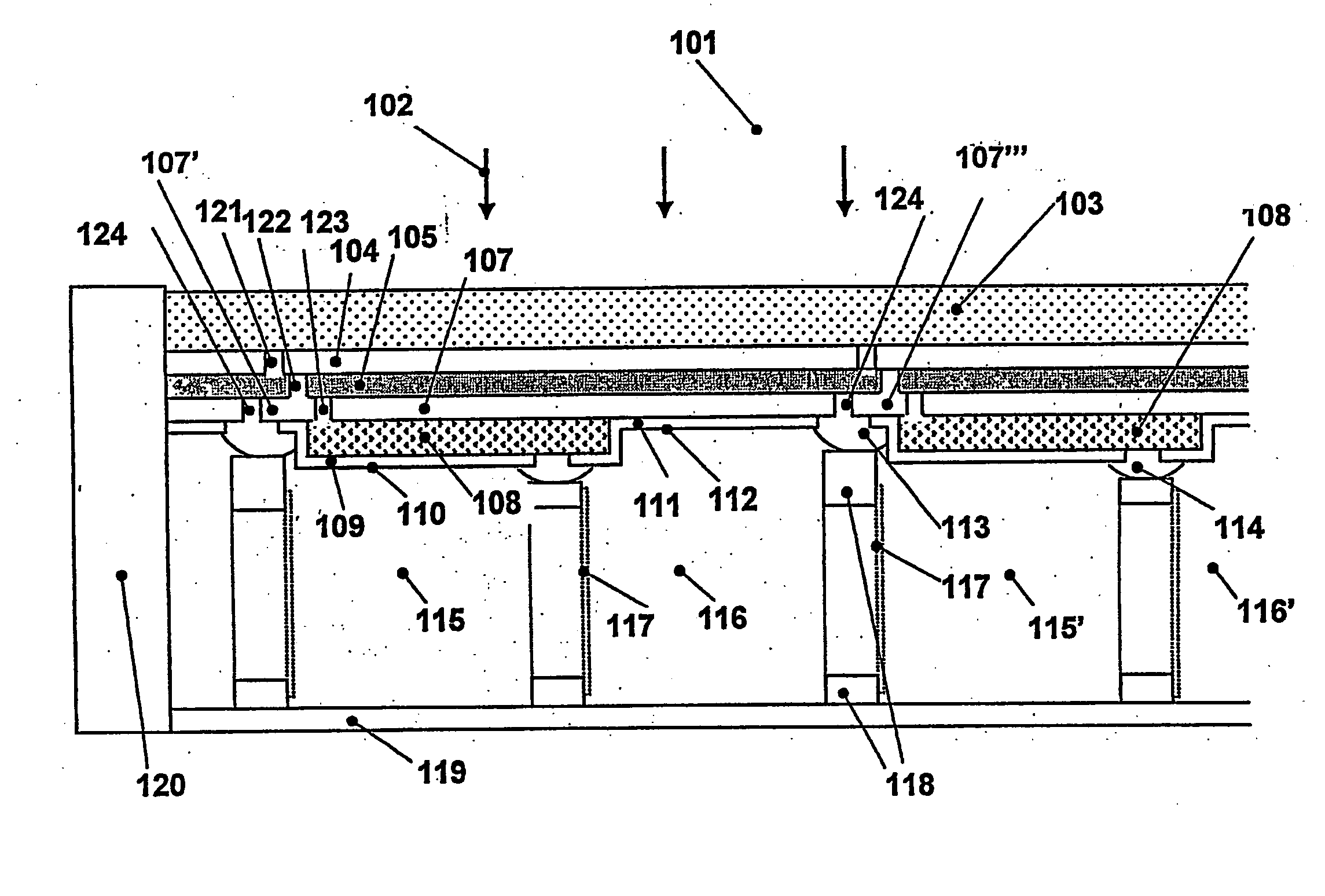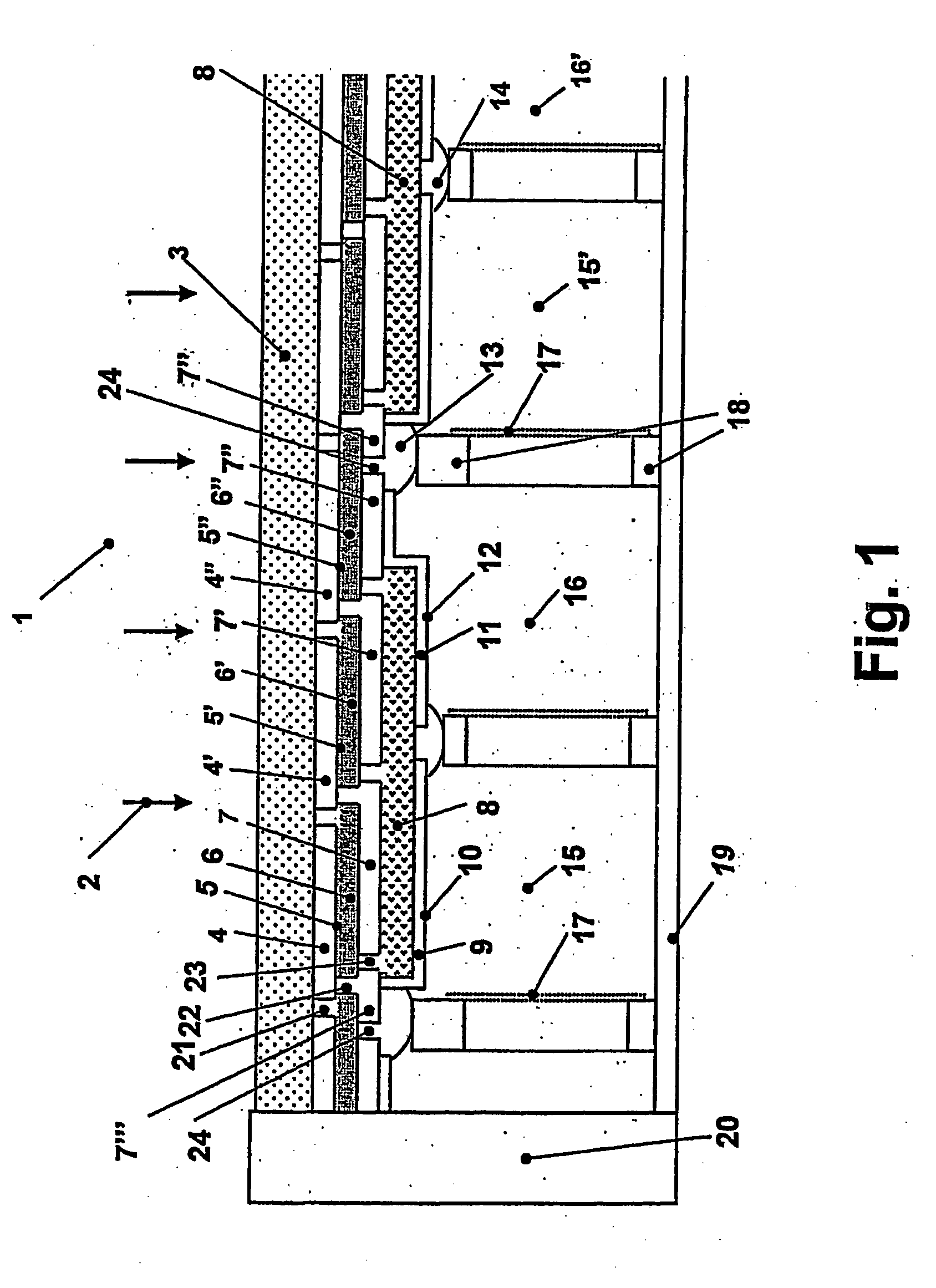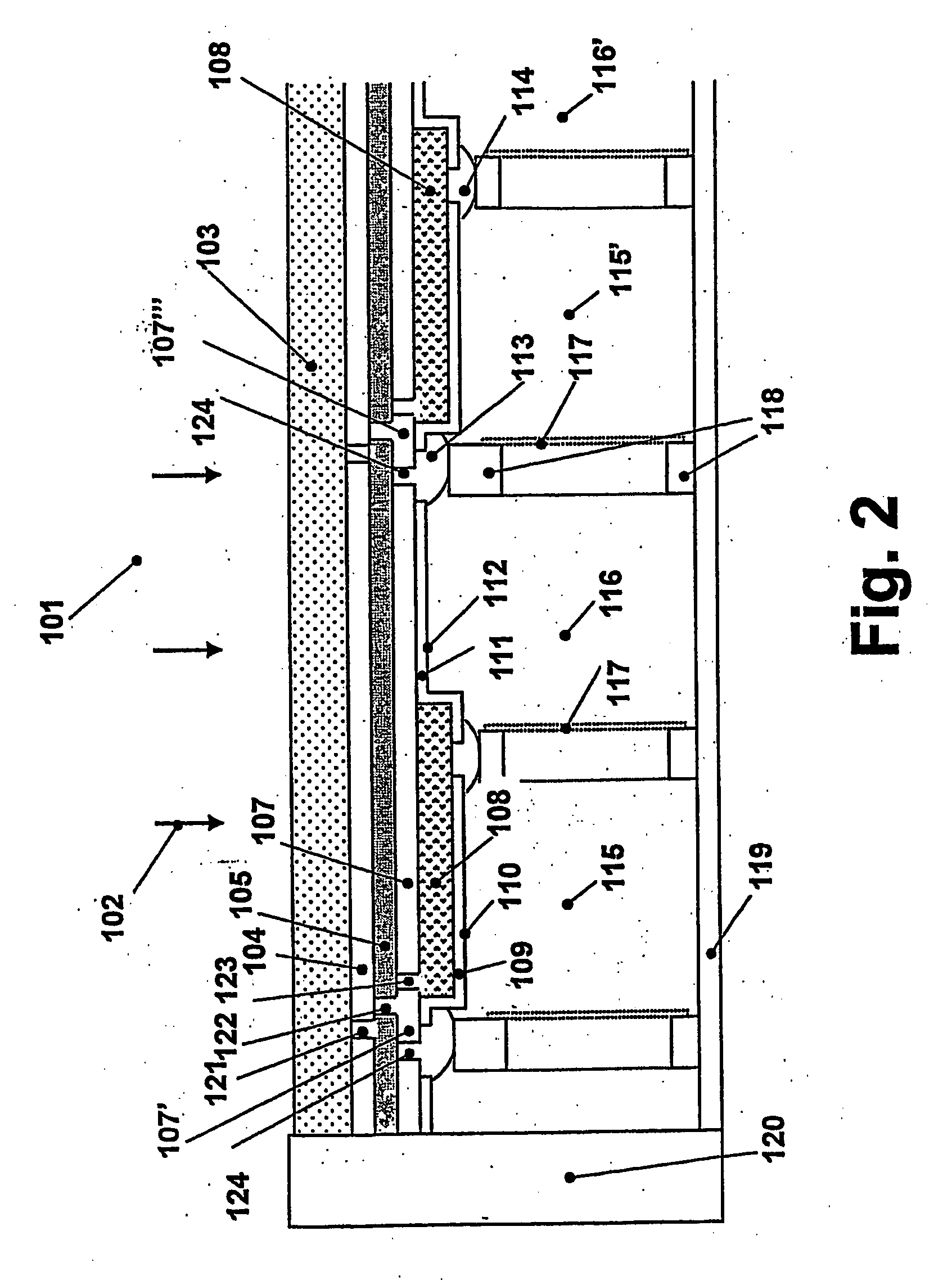Interconnected Photoelectrochemical Cell
a photoelectrochemical and interconnected technology, applied in the direction of sustainable manufacturing/processing, greenhouse gas reduction, final product manufacturing, etc., can solve the problem of solar cells that do not generate sufficient voltag
- Summary
- Abstract
- Description
- Claims
- Application Information
AI Technical Summary
Benefits of technology
Problems solved by technology
Method used
Image
Examples
Embodiment Construction
[0058]The instant invention provides a photoelectrochemical (PEC) cell that splits water under radiation and generates hydrogen and oxygen. In this PEC cell, a photovoltaic (PV) electrode, illustrated in FIG. 1, FIG. 2 and FIG. 3, comprised of solar cells, appropriately interconnected, and appropriate coatings and catalysts, are placed in contact with an electrolyte, either acidic or alkaline. Under radiation such as sunlight, the PV electrode generates a voltage. The interconnect schemes allow the voltage for the solar cell to be applied to the anode and cathode that are in contact with electrolyte. The interconnect also allows the voltage to stack up, in case of single-junction solar cells as an example, and become sufficient to drive electrolysis and produce hydrogen and oxygen. A membrane is installed in the PEC cell to allow exchange of ions for the electrolysis yet confines the hydrogen and oxygen gases into two different compartments of the cell.
The Photoelectrode
[0059]The ph...
PUM
| Property | Measurement | Unit |
|---|---|---|
| width | aaaaa | aaaaa |
| width | aaaaa | aaaaa |
| open circuit voltage | aaaaa | aaaaa |
Abstract
Description
Claims
Application Information
 Login to View More
Login to View More - R&D
- Intellectual Property
- Life Sciences
- Materials
- Tech Scout
- Unparalleled Data Quality
- Higher Quality Content
- 60% Fewer Hallucinations
Browse by: Latest US Patents, China's latest patents, Technical Efficacy Thesaurus, Application Domain, Technology Topic, Popular Technical Reports.
© 2025 PatSnap. All rights reserved.Legal|Privacy policy|Modern Slavery Act Transparency Statement|Sitemap|About US| Contact US: help@patsnap.com



